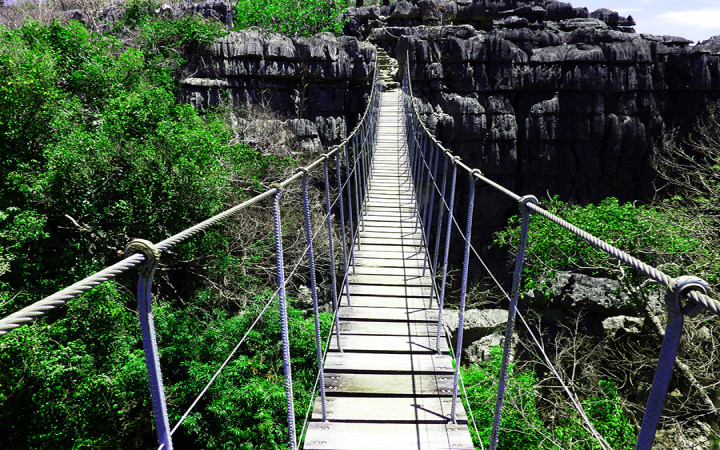Today’s Wonder of the Day was inspired by Kailey. Kailey Wonders, “How do bridges hold ?” Thanks for WONDERing with us, Kailey!
If you want to travel from one coast of the United States to the other, you have many . You could fly on an airplane or ride on a train. You could jump in a car and take the great American road trip. You could even walk!
Our modern transportation are conveniences we often take for granted. Can you imagine going back in time to join the Lewis and Clark expedition? In addition to missing cars, trains, and airplanes, there's something else you'd likely find yourself yearning for: bridges.
Today, bridges are everywhere. They span rivers, lakes, and streams. They cross deep valleys. They even allow you to drive over other highways and lanes of traffic.
Made from concrete and steel, most bridges are solid. We don't give a second thought to walking or driving over them. That wasn't always the case in the past, though.
The first bridges ever created were likely small logs placed over creeks and streams. It probably didn't take long for early humans to develop the first bridges made of natural materials, such as ropes made from tall grasses.
The simplest rope bridge consists of just two cables stretched across a valley or body of water: one cable to stand on and one cable to hold onto with your hands. Since these can be tricky to navigate, additional cables to hold onto were eventually added. Connecting the cable you stand on to the cables used by your hands with ropes can also create additional stability.
Rope bridges were used extensively by the ancient Incas. They lived in South America's rugged Andes Mountains, which were filled with deep gorges. To travel efficiently across these gorges, the Incas built suspension bridges made of ropes they wove from natural fibers, such as animal hair, grass, and cotton.
If you've ever walked across a rope bridge, you already know they can sway back and forth. This can be a scary experience for some people. The Incas, however, thrived with their rope bridges. They didn't have wheeled vehicles, but their rope bridges were used for foot traffic by both humans and animals.
The downside to using natural fibers to make rope bridges was that these biodegradable materials decayed over time. This meant that rope bridges often had to be rebuilt every year. It also means that the Incan rope bridges are all gone…except for one.
The Q'eswachaka is a rope bridge that spans the Apurímac River near the town of Huinchiri in Peru. Every year for about the last 600 years, a group of over 1,000 people from four nearby Quechua communities comes together to rebuild the bridge in a special ritual that has been included on UNESCO's World Heritage list.
Woven out of local Jarava ichu grass (also known as feathergrass because of its thin, delicate blades), the cables formed by twisting together many strands of grass are incredibly strong. The bridge can hold approximately 5,000 pounds and transport both humans and llamas across the gorge.
A modern bridge spans the river not far away. However, the local communities still gather together every June to rebuild the bridge as a means to maintain a connection to their ancestors who lived in the area when the region featured more than 200 similar rope bridges made of grass.




